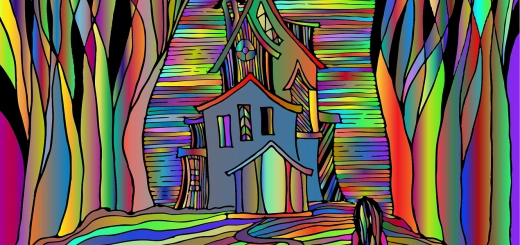The Book of the Dead: Guide to the Afterlife

Looking for more amazing products? Check out our online store and explore our collection here! Happy shopping!
Before diving in, please note: This post is for informational purposes only. If you’d like to know more about how we approach topics, feel free to check out our friendly Disclaimer Page.
Hey there, amazing readers! 
We’re committed to delivering quality posts, and your support (even just sticking around despite the ads) means everything to us. So, bear with us, and thanks for helping us keep the good vibes rolling. Now, on to the fun stuff!
TRANSLATE BUTTON AT THE END OF THE ARTICLE
Introduction: The Book of the Dead and its Significance
The Book of the Dead, also known as "The Book of Coming Forth by Day," is an ancient Egyptian funerary text that is believed to guide the deceased through the afterlife.
It is a collection of magical spells, rituals, and prayers that were written on papyrus and buried with the dead to ensure their safe journey into the next world.
The book played a significant role in ancient Egyptian religious beliefs and practices and provides valuable insights into their views on death and the afterlife.
Origins of the Book of the Dead in Ancient Egypt
The origins of the Book of the Dead can be traced back to the early New Kingdom period of ancient Egypt, around the 16th century BCE.
It evolved from earlier funerary texts, such as the Pyramid Texts and the Coffin Texts, which were exclusively reserved for the pharaohs and members of the royal family.
As time went on, these texts became more accessible to the common people, and the Book of the Dead emerged as a standardized collection of spells and rituals that could be customized for individual burials.
Purpose and Function of the Book of the Dead
The primary purpose of the Book of the Dead was to assist the deceased in navigating the complex journey through the afterlife and ultimately reach the realm of Osiris, the god of the dead.
It was believed that without the proper knowledge and protection offered by the book, the deceased would encounter various dangers and obstacles that would prevent them from achieving eternal life.
The book also served as a guide for the soul to reunite with the body during the stages of mummification and burial.
Structure and Contents of the Book of the Dead
The Book of the Dead is not a single cohesive text but rather a compilation of individual spells and rituals.
These spells were organized into chapters, known as "Chapters of Coming Forth by Day," and each chapter addressed specific aspects of the afterlife journey.
The content of the book varied depending on the status and wealth of the deceased, with wealthier individuals having more elaborate and extensive versions of the book.
The spells often included instructions for the deceased to recite certain words, perform specific actions, or carry specific amulets to ensure their protection.
Spells and Rituals in the Book of the Dead
The spells found in the Book of the Dead covered a wide range of topics and functions.
Some spells were intended to protect the deceased from evil spirits and dangerous creatures they may encounter in the afterlife.
Others aimed to aid the deceased in passing through various gates, obstacles, or judgment scenes.
The book also contained spells for ensuring the deceased’s physical and psychological well-being, such as spells for reuniting the body and soul or for providing sustenance and nourishment.
Journey of the Soul: Navigating the Afterlife
According to ancient Egyptian beliefs, the journey of the soul after death involved several stages.
The first stage involved the soul leaving the body and traversing the dangerous and treacherous underworld.
The soul would encounter various challenges and tests, including crossing the Lake of Fire and overcoming hostile creatures.
The next stage was the judgment of the soul, where the heart of the deceased would be weighed against the feather of Ma’at, the goddess of truth and justice.
If the heart was found to be pure and free from sin, the soul would be deemed worthy and allowed to proceed to the realm of Osiris.
Protective Amulets and Spells in the Book of the Dead
The Book of the Dead contained numerous protective amulets and spells that were believed to safeguard the deceased during their journey through the afterlife.
These amulets, often depicted as small figurines or charms, were buried with the deceased or placed within their wrappings.
They were thought to possess magical properties and offered protection against evil spirits, dangerous creatures, and supernatural forces.
Some of the most common amulets included the Eye of Horus, the Ankh symbol, and the Scarab beetle, each with its own specific significance and protective qualities.
Judgment of the Soul: Weighing of the Heart Ceremony
One of the most crucial aspects of the Book of the Dead was the belief in the judgment of the soul.
This ceremony, depicted in many ancient Egyptian funerary scenes, involved the deceased’s heart being weighed against the feather of Ma’at.
The scales were presided over by Osiris, the god of the dead, and Thoth, the god of wisdom.
Explore the Path to Spirituality and Enlightenment – Start Here.
If the heart was found to be lighter than the feather, it meant that the deceased had led a virtuous life and would be granted eternal life in the afterlife.
However, if the heart was heavy with sin, it would be devoured by the demon Ammit, resulting in the soul’s annihilation.
Osiris and the Role of the God of the Dead
Osiris played a central role in the beliefs surrounding the Book of the Dead.
As the god of the dead and ruler of the afterlife, Osiris was responsible for judging the deceased’s soul and granting them eternal life.
He was often depicted as a mummified figure, symbolizing the resurrection and immortality.
The deceased would invoke Osiris in their prayers and rituals, seeking his protection, guidance, and mercy throughout their journey.
Osiris’ association with agriculture and fertility also emphasized the cyclical nature of life and death, mirroring the journey of the soul through the afterlife.
Evolution and Adaptation of the Book of the Dead
The Book of the Dead underwent significant changes and adaptations over time.
As new beliefs and practices emerged in ancient Egyptian society, the contents and structure of the book were modified to reflect these shifts.
Different versions of the book were produced, tailored to the needs and desires of individual patrons.
The illustrations and texts became more elaborate and personalized, featuring scenes from the deceased’s life and additional spells specific to their circumstances.
These adaptations demonstrate the dynamic nature of ancient Egyptian religion and its ability to incorporate new ideas while maintaining core beliefs about the afterlife.
Discoveries and Translations of the Book of the Dead
The Book of the Dead was rediscovered and gained renewed interest during the 19th century.
Archaeologists and scholars unearthed numerous papyrus scrolls containing the text, providing valuable insights into ancient Egyptian religious beliefs and practices.
The decipherment and translation of the hieroglyphics on these papyri allowed modern researchers to study the book’s content and understand its significance in greater detail.
Today, many museums and institutions around the world possess fragments or complete copies of the Book of the Dead, enabling us to explore this ancient funerary text and its role in Egyptian civilization.
Legacy of the Book of the Dead: Influence on Ancient Egyptian Religion
The Book of the Dead played a profound influence on ancient Egyptian religion and society.
It shaped their beliefs about death, the afterlife, and the role of the gods in the journey of the soul.
The rituals and spells described in the book became integral parts of funerary practices, ensuring that the deceased would have a successful transition into the afterlife.
The concept of judgment and the weighing of the heart ceremony also had a lasting impact on Egyptian society, emphasizing the importance of leading a virtuous life and facing the consequences of one’s actions in the afterlife.
The Book of the Dead remains a testament to the rich and complex religious traditions of ancient Egypt and continues to fascinate and intrigue researchers and enthusiasts alike.
Conclusion
The Book of the Dead holds a significant place in the religious beliefs and practices of ancient Egypt.
Its origins can be traced back to the New Kingdom period, and it evolved from earlier funerary texts reserved for the elite.
The book’s purpose was to guide the deceased through the afterlife, with spells and rituals providing protection and assistance.
The journey of the soul involved navigating the treacherous underworld and facing judgment by Osiris.
The book also contained protective amulets and emphasized the importance of leading a virtuous life.
The Book of the Dead continues to captivate and reveal insights into the ancient Egyptian civilization’s views on death, the afterlife, and the role of gods in shaping their destiny.

The Enlightenment Journey is a remarkable collection of writings authored by a distinguished group of experts in the fields of spirituality, new age, and esoteric knowledge.
This anthology features a diverse assembly of well-experienced authors who bring their profound insights and credible perspectives to the forefront.
Each contributor possesses a wealth of knowledge and wisdom, making them authorities in their respective domains.
Together, they offer readers a transformative journey into the realms of spiritual growth, self-discovery, and esoteric enlightenment.
The Enlightenment Journey is a testament to the collective expertise of these luminaries, providing readers with a rich tapestry of ideas and information to illuminate their spiritual path.
Our Diverse Expertise
While our primary focus is on spirituality and esotericism, we are equally passionate about exploring a wide range of other topics and niches 

To ensure we provide the most accurate and valuable insights, we collaborate with trusted experts in their respective domains 
Our blog originally focused on spirituality and metaphysics, but we’ve since expanded to cover a wide range of niches. Don’t worry—we continue to publish a lot of articles on spirituality! Frequently visit our blog to explore our diverse content and stay tuned for more insightful reads.
Hey there, amazing reader! 
Check out our store here and take a peek at some of our featured products below! Thanks for being awesome!
















